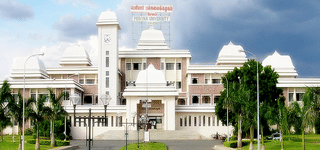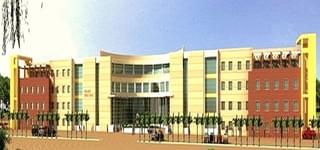Diploma in Journalism and Mass Communication is a 1-year long course that involves the conduct of Advertising, Political Campaigning, Journalism processes with the use of radio, social media, television and so on. Journalism is the activity of gathering, creating, evaluating, and presenting information in the form of news and articles.
To be an eligible candidate for Diploma in Journalism and Mass Communication, the aspirants must have scored a minimum of 50% marks at the 10+2 level and must have studied English as a subject and possess speaking and writing skills.Check: All Full Forms of Journalism Courses
Admissions to Diploma in Journalism and Mass Communication are offered mostly on the basis of candidate’s merit in 10+2 or equivalent. Some institutes conduct particular entrance exams that are required to be qualified in order to be eligible for this course.
Read More: Diploma in Journalism and Mass Communication Colleges in India
Some of the well-known and reputed institutes across the country providing Diploma in Journalism and Mass Communication include Xavier Institute of Communications Mumbai, Mahatma Gandhi University Meghalaya, Madras Christian College Chennai and so on.
Some of the major topics covered under this curriculum include that of Radio and Television Journalism, Reporting, Editing, Emerging Social Media etc. In India, the average course fee for Diploma in Journalism and Mass Communication ranges between INR 14,000 - INR 80,000.
Being a job-oriented course, Diploma in Journalism and Mass Communication provides you with a wide range of opportunities. At the successful completion of the course, such students may find ample employment opportunities as Content Writer, Journalist, Social Media Executive, Translator etc.
The average initial salary of Diploma in Journalism and Mass Communication professionals is INR 1 LPA - INR 6 LPA which might further increase with an increase in experience and expertise. The most common employment areas hiring such candidates are News Agencies, Broadcasting Companies, All India Radio, Photography Studios, Advertising Agencies, TV and Newspapers etc.
Table of Content
- Diploma in Journalism and Mass Communication Course Highlights
- Diploma in Journalism and Mass Communication: What is it About?
- Diploma in Journalism and Mass Communication: Course Advantages
- Diploma in Journalism and Mass Communication Admission Process
4.2 Tips to get the Best College
6.1 Course Books
- Diploma in Journalism and Mass Communication Course Comparison
- Diploma in Journalism and Mass Communication: Job Prospects
8.1 Future Scope
Diploma in Journalism and Mass Communication Course Highlights
| Course Level | Diploma |
| Full-Form | Diploma in Journalism and Mass Communication |
| Duration | 1 Year |
| Examination Type | Semester/ Annual |
| Eligibility | 10+2with 50% aggregate marks. |
| Admission Process | Merit or Entrance based |
| Average Course Fee | INR 14,000 - INR 80,000 |
| Average Salary | INR 1 LPA - INR 6 LPA |
| Job Positions | Content Writer, Journalist, Social Media Executive, Translator, Columnists, TV News Reporter, Feature Writer, Web Content Writer, Special Correspondent, Radio Jockey etc |
| Employment Areas | News Agencies, Broadcasting Companies, All India Radio, Photography Studios, Advertising Agencies, TV and Newspapers, Communications Industries etc |
Diploma in Journalism and Mass Communication: What is it About?
The following is a brief overview of the Diploma in Journalism and Mass Communication course to give students an idea of what the subject entails:
- The Diploma in Journalism and Mass Communication is a one-year programme that teaches students how to conduct advertising, political campaigning, and journalism processes through the use of radio, social media, and television.
- Journalism is the activity of gathering, creating, evaluating, and presenting information in the form of news and articles. However, mass communication refers to the process of disseminating and exchanging information to large segments of the population via mass media.
- Students who have a keen interest and passion for writing are considered the most suitable students for such courses. This course helps the students to gain a piece of in-depth knowledge about the media and nuances of journalism.
- It is clear that in recent years, the media has become an integral part of the nation in all possible ways, including newspapers, radio, televisions, and so on.
- The aspiring students must possess good communication skills, interpersonal skills and even creative skills which might help them in pursuing this particular course.
Diploma in Journalism and Mass Communication: Course Advantages
Students have become interested in this field for a variety of reasons in recent years. The following are some of the course's benefits:
- In recent years, the course has proven to be competent enough to improve the level of service sector industries and manufacturing companies.
- After successfully completing the course, these students may find lucrative employment opportunities as Content Writers, Journalists, Social Media Executives, Translators, and many other positions in this field.
- The average starting salary for these professionals is INR 1 LPA, which may increase with experience and expertise.
- This is an excellent course for students who want to learn about the media and the nuances of journalism, and it includes a variety of dimensions such as writing, public relations, writing, advertising, and so on.
- One can even go for higher studies in the same field to gain more knowledge and experience about the same.
What is the Diploma in Journalism and Mass Communication Admission Process?
Admissions to the Diploma in Journalism and Mass Communication are mostly merit based. However, the common admission criteria followed by most of the institutes is as follows:
- Students may sign up for the course either online or in person.
- Only the official websites of the colleges offering the course will provide students with all relevant information about admission dates, shortlisted applicants, the course prospectus, and so on.
- Candidates must also appear for entrance tests, if any, conducted by the institute and qualify the same with relevant scores.
- The institutes will publish merit lists and candidates shortlisted will be required to appear for counselling or document verification round on the date and venue set by the institute.
- In order to take advantage of the benefits at the time of admission, reserved category students must have the reserved certificates as required documents properly signed by the concerned authority.
Diploma in Journalism and Mass Communication: Eligibility Criteria
The following are the eligibility requirements that must be fulfilled for a Diploma in Journalism and Mass Communication:
- Aspirants must have secured a minimum of 50% aggregate marks in 10+2 or equivalent from recognized institute or board.
- Candidates should have studied English as a subject in 10+2 or equivalent examinations.
- Students must have excellent communication, listening, and writing skills.
- At the time of admission, the applicant must not have any prior backlogs in any of the subjects taught at the 10+2 level.
Diploma in Journalism and Mass Communication: Tips to get the Best College
Every student's dream is to attend a prestigious institute with desired features. To do so, they must adequately prepare themselves. Some pointers have been included below for the benefit of the students:
- A strong academic background is required for admission to any college. Students must have graduated from a recognised institute or university.
- Make a list of your preferred colleges and stay in contact with the latest admission trends, dates etc.
- Check out some most preferred features of the institute like facilities, faculty, infrastructure, ranking, accreditations, placements etc.
- Get a sense of the curriculum that was available for a specific course at that college.
- Check to see if the college offers classes, as this has recently become a prerequisite.
- Learn about the college's fee structure and see how it meets your needs.
Diploma in Journalism and Mass Communication: Top Colleges
| Name of the Institute | Average Fees |
|---|---|
| Madras Christian College, Chennai | INR 14,000 |
| Xavier Institute of Communications, Mumbai | INR 3,25,230 |
| Poddar Group of Institutions, Jaipur | INR 40,000 |
| Pacific University, Udaipur | INR 30,000 |
| Maulana Azad University, Jodhpur | INR 2,000 |
| ISBM University, Raipur | INR 21,900 |
Know More: Top Journalism (Mass Communication) Colleges in India
Diploma in Journalism and Mass Communication College Comparison
| Parameters | Madras Christian College, Chennai | Xavier Institute of Communications, Mumbai |
|---|---|---|
| Overview | Established in 1837, this is a Private University affiliated with the University of Madras. The institute is well known to provide nearly 30-full time UG and PG courses in various streams including Arts, Science and Commerce. | Established in 1969, XIC is an autonomous university set up by The Catholic Bishops’ Conference of India. It is mostly known for its Mass Communication and Media degrees. |
| Location | Chennai, Tamil Nadu | Mumbai, Maharashtra |
| Eligibility | 10+2 from a recognized board | Graduation in relevant stream |
| Admission Criteria | Merit based | Entrance Test followed by Personal Interview |
| Average Course Fee | INR 14,000 | INR 3,25,230 |
Diploma in Journalism and Mass Communication: Syllabus
| Semester 1 | Semester 2 |
|---|---|
| Editing | Emerging Social Media |
| Reporting | Public Relations and Advertising |
| Communication Concepts | Media Management |
| History, Law and Ethics | Radio and TV Journalism |
Diploma in Journalism and Mass Communication: Course Books
The most important aspect of a course is the books and the selection of books is far more important than that. For the students' convenience, a list of the preferred books is provided below:
| Name of the Book | Name of the Author |
|---|---|
| Mass Communication in India | Keval J. Kumar |
| Basic Journalism | R. Parthasarthy |
| Mass Communication: Principles and Concepts | Seema Hasan |
| Handbook of Journalism | Vir Bala Aggarwal, V.S. Gupta |
| Modern Journalism and Mass Communication | S.C. Sharma, Sweta Bakshi |
Diploma in Journalism and Mass Communication Course Comparison
Diploma in Journalism and Mass Communication and BA Journalism and Mass Communication are frequently the most popular courses, so a comparison will assist students in making an informed decision about their area of interest.
Checkout: Top Colleges in India offering BA Journalism and Mass Communication
| Parameters | Diploma in Journalism and Mass Communication | BA Journalism and Mass Communication |
|---|---|---|
| Name of the Course | Diploma in Journalism and Mass Communication | Bachelor of Arts in Journalism and Mass Communication |
| Overview | Diploma in Journalism and Mass Communication is a 1-year long course that involves the conduct of Advertising, Political Campaigning, Journalism processes with the use of radio, social media, television and so on. | BA Journalism and Mass Communication is a 3-year long course that focuses on providing the students with excellent knowledge about technical skills and social understanding so as to convey necessary information to the general public. |
| Level | Undergraduate | Undergraduate |
| Duration | 1 Year | 3 Years |
| Eligibility | 10+2 with 50% aggregate marks | 10+2 with 50% aggregate marks |
| Admission Process | Merit or Entrance based | Merit or Entrance based |
| Average Course Fee | INR 14,000 - INR 80,000 | INR 2,000 - INR 5,00,000 |
| Job Positions | Content Writer, Journalist, Social Media Executive, Translator and much more related to this specific field. | Photojournalist, Editor, Copywriter, Public Relations Officer, Feature Writer, and many more. |
| Top Recruiters | Communication Industries, Television, Social Media, NGOs, Radio, etc. | Hindustan Times Group, TV 18, CNBC, NDTV Network, and so on. |
| Average Salary | INR 1 LPA - INR 6 LPA | INR 4 LPA - INR 10 LPA |
Diploma in Journalism and Mass Communication: Job Prospects
Journalism and mass communication has recently emerged as a developing field. As a result, there is a growing demand for professionals in this field. Candidates with specialised skills in this field can find work in both the private and public sectors. They may find lucrative employment opportunities in companies and organisations like Hindustan Times Group, TV 18, CNBC, NDTV Network etc as Content Writer, Journalist, Social Media Executive, Translator etc.
| Job Profile | Job Description | Average Salary |
|---|---|---|
| Journalist | Journalists are in charge of gathering and reporting important news and events to news outlets or other related organisations. They may work for news organisations, websites, newspapers, magazines etc | INR 3 LPA - INR 5 LPA |
| Social Media Executive | Their area of work involves management of media channel campaigns, working as a team so as to engage the audience and building the brand. | INR 3 LPA - INR 4 LPA |
| Content Writer | These professionals are indulged in the creation of content for websites and journals, writing scripts, reviews and much more. | INR 2 LPA - INR 3 LPA |
| Communications Specialist | Their area of work involves the maintenance of the relationship between the public and the organisation in which they presently work. | INR 3 LPA - INR 6 LPA |
| News Reader | They are given the responsibility to deliver or read the news on radio or television channels. | INR 1 LPA - INR 6 LPA |
Diploma in Journalism and Mass Communication: Future Scope
At the successful completion of the course, Diploma in Journalism and Mass Communication graduates are open to several worthy opportunities as far as their careers are concerned. Certain future prospects of this course are as follows:
- Candidates can start working in public or corporate sectors at various designated positions.
- Candidates can pursue BA Journalism and Mass Communication at bachelor’s level and MA Journalism and Mass Communication at master's level.
- Candidates can also go for a doctorate degree, i.e, PhD Journalism and Mass Communication.
FAQs
Ques. What is Diploma in Journalism and Mass Communication (in India preferably)?
Ans. Mass Communication as a career option is not limited to journalism alone. Media as a professional field covers all aspects of human life which can be the day-to-day happenings of the world of politics to social issues which are sure to get us thinking. The main reasons why people are actively heading to join this field is that they can easily bring forward their creativity and get paid adequately to do the same.
Ques. Is Amity Online good for a diploma in journalism and mass communication?
Ans. There are many online institutes in India from where you can pursue journalism and mass communication, but the best amongst them is Amity University Online. Amity Online offers students advanced online learning facilities. The institute provides quality education which boosts your employability and also ensures success in your career. The faculty and online teaching staff at Amity University Online are highly knowledgeable, and many are industry experts who can provide you valuable information to excel in your chosen line of work.
Ques. What type of knowledge is given with a diploma in journalism and mass communication?
Ans. Journalism & Mass Communication expose students to recent developments in media issues and media research. It also provides professional familiarity with the various technologies involved in mass media like computer applications, respective software and hardware applied in print, radio, television, internet and such forms of media.
Ques. Which one is better, a bachelor’s or a PG diploma in journalism and mass communication?
Ans. There’s really no reason to get a postgraduate degree in journalism unless you plan on becoming a professor. A bachelor’s degree will give you all that you need to become a successful journalist.
Ques. I am doing my graduation diploma in journalism and mass communication from IGNOU which is of 1 year. Can I apply for the UGC NET exams?
Ans. Yes, Just check whether your diploma is recognized as a Diploma Degree or not. This can be done by asking your Institute from where you are pursuing the graduate Diploma in Journalism.
Ques. What are the best institutions that provide diploma courses in journalism and mass communication in Jaipur?
Ans. Alternately, just visit the various colleges in Jaipur. See if they have a good library. Best would be to do it from the University College/Department as they have a good library and qualified teachers. Also depending upon your interest, do see if the emphasis will be on Print media or also Electronic and Digital media.


![Himalayan University - [HU]](https://image-static.collegedunia.com/public/college_data/images/appImage/54848_himalyan_new1.jpg?h=150&w=320&mode=stretch)



![Maulana Azad National Urdu University - [MANUU]](https://image-static.collegedunia.com/public/college_data/images/appImage/25365_cover.jpg?h=150&w=320&mode=stretch)




Comments